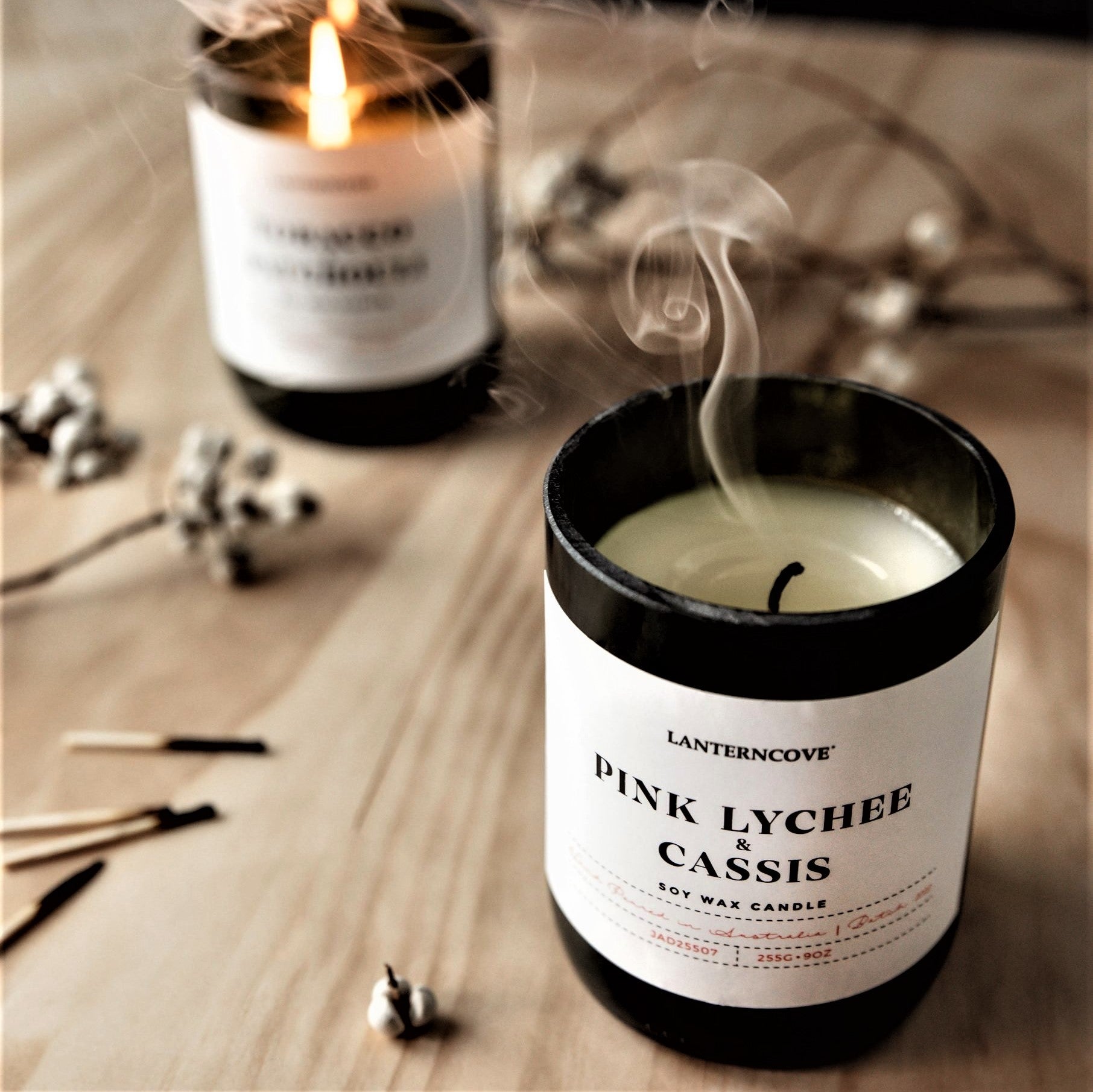Discover the Globe of Crystal Soy Candles and Home Fragrance Thrills
Discover the Globe of Crystal Soy Candles and Home Fragrance Thrills
Blog Article
From Wick to Wax: Understanding the Chemistry Behind Soy Wax Candles and Their Ecological Impact
As we brighten our spaces with the warm glow of candle lights, there exists a realm of detailed chemistry behind the relatively easy act of lighting a soy wax candle. The option in between soy and paraffin wax prolongs beyond simple visual appeals, diving right into the world of environmental impact and the very structure of the products. Understanding the molecular structure of soy wax and its burning process clarifies the exhausts launched right into our environments. Join us as we unravel the scientific ins and outs behind soy wax candles and discover their effects on our setting.
Soy Wax Vs. Paraffin Wax
When comparing soy wax and paraffin wax for candle production, it is vital to understand the distinct characteristics and benefits of each material. Soy wax is a natural, sustainable source acquired from soybean oil, making it environmentally friendly and naturally degradable - candles. In comparison, paraffin wax is a byproduct of petroleum refining, which increases concerns regarding its environmental influence and sustainability
Soy wax candle lights burn cleaner and release less soot contrasted to paraffin wax candle lights, making them a much healthier selection for interior air high quality. Additionally, soy wax has a reduced melting point, enabling a longer-lasting candle that disperses scent extra properly. Paraffin wax, on the other hand, often tends to melt faster and less easily, potentially releasing damaging chemicals right into the air.
From a sustainability point of view, soy wax is preferred for its biodegradability and sustainable sourcing, straightening with the growing consumer choice for ecologically conscious products. While paraffin wax has actually been a standard choice in candle light making due to its price and convenience of usage, the shift towards eco-friendly options like soy wax is obtaining momentum in the industry.
Chemical Structure of Soy Wax

Combustion Process in Soy Candles
The chemical make-up of soy wax directly influences the burning process in soy candles, affecting factors such as shed time, fragrance release, and ecological influence. When a soy candle light is lit, the heat from the fire thaws the wax near the wick. This liquid wax is after that formulated the wick as a result of capillary activity. As the fluid wax gets to the fire, it evaporates and undertakes combustion. The burning procedure involves the vaporized hydrocarbons in the wax responding with oxygen airborne to produce warm, light, water vapor, and carbon dioxide.
The burning effectiveness of soy candles is affected by the purity of the soy wax and the high quality of the wick. A clean-burning soy candle light with a properly sized wick will generate a stable fire and minimize residue formation. This not just extends the melt time of the candle light but additionally enhances the launch of fragrances. Furthermore, soy wax candle lights have a lower ecological effect contrasted to paraffin candles as a result of their naturally degradable and eco-friendly nature.

Environmental Advantages of Soy Wax

Considered a lasting option to standard paraffin wax, soy wax offers notable environmental advantages that make read it a prominent selection among eco-conscious customers. One significant benefit of soy wax is its sustainable sourcing. Soy wax is derived from soybean oil, which is mostly cultivated in the USA. The growing of soybeans helps sustain local farmers and lowers the dependence on non-renewable fossil fuels made use of in paraffin wax production. Furthermore, soy wax is eco-friendly, implying it damages down normally without releasing hazardous contaminants right into the environment. This characteristic makes soy wax candles a much more eco-friendly alternative compared to paraffin wax candles, which are made from petroleum, a non-renewable resource. Soy wax burns cleaner and generates less soot than paraffin wax, adding to better interior air top quality and lowering the need for cleaning and upkeep. Generally, the go right here ecological benefits of soy wax straighten with the growing demand for eco-friendly and lasting products in the marketplace.
Recycling and Disposal Factors To Consider
Recycling and proper disposal of soy wax candle lights play a crucial duty in keeping ecological sustainability and lowering waste in neighborhoods and families. The first action is to ensure that the candle light has actually shed entirely when it comes to reusing soy wax candle lights. This can be accomplished by allowing the candle to melt up until the wick is no more usable, and afterwards letting the continuing to be wax cool and strengthen. When the wax has actually strengthened, it can be thoroughly removed from the container.

In terms of disposal, if recycling is not an alternative, soy wax candle lights are naturally degradable and can be securely thrown away in the majority of house waste systems. It is constantly advised to inspect with local reusing centers or waste administration services for particular guidelines on candle disposal to make certain proper handling and environmental security.
Final Thought
In final thought, the chemistry behind soy wax candle lights reveals their environmental benefits over paraffin wax candle lights. Soy wax, derived from soybean oil, burns cleaner and creates much less residue when compared to paraffin wax.
When comparing soy wax and paraffin wax for candle making, it is important to recognize the distinct qualities and benefits of each material (soy wax candles).Soy wax candles melt cleaner and discharge much less soot contrasted to paraffin wax candle lights, making them a healthier selection for indoor air top quality.Thought browse this site about a sustainable alternative to conventional paraffin wax, soy wax uses notable ecological benefits that make it a preferred selection amongst eco-conscious consumers. Soy wax burns cleaner and generates less residue than paraffin wax, contributing to far better interior air quality and decreasing the need for cleansing and maintenance.In verdict, the chemistry behind soy wax candles reveals their ecological advantages over paraffin wax candle lights
Report this page